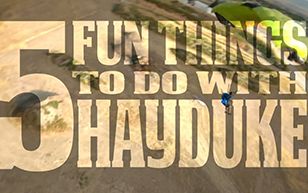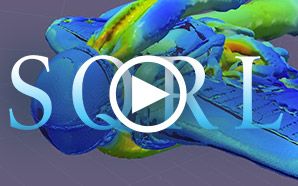Outlaw Attachment Point
The OUTLAW main attachment point has unique positioning on the top surface and a different load path to the lines.
Positioning.
The OUTLAW attachment point is further forward than some traditional designs. This places the attachment point closer to the B line group.
Load Path.
While many BASE canopies are descended from skydiving reserves, the OUTLAW has a profile designed specifically for BASE jumping. One aspect of this design is upper surface shaping that is extensive enough to require a different load path for the main attachment point and therefore a different type of reinforcement for it. Most traditional parachutes feature a “box” of load tape that spans the upper surface center cell and descends the center loaded ribs. The OUTLAW load, in contrast, descends only the center non-loaded rib. This is because when the attachment point is loaded by a static line deployment (in particular) or a pilot chute deployment (also), the force is transmitted through the center non-loaded rib and across the bottom surface of the canopy. That is the section of the parachute that is reinforced.
If you look at an OUTLAW and check for load tape on the center loaded ribs, you will see that they don’t even go all the way to the upper surface of the canopy and they do not connect with the 3” nylon tape on the upper surface center cell. WTF? The reason is that the path from attachment point to the B line group is a full 10cms longer via the center loaded rib (on a 248 size) than the actual load path, which descends the non-loaded rib.
When pulled to failure, in order to simulate a problem during a static line deployment where the bridle snags or the break-cord is mis-rigged, the main attachment webbing on the top surface separates from the canopy at forces in the range of 700-800lbs. The mode of failure is via the 4 bar tacks securing the webbing to the upper surface, which form a fusible link in the system.
This would result in one of two scenarios:
- At >700lbs fall force, this leaves the jumper separated from the static line with a fully airworthy canopy.
- At <700lbs fall force, this leaves the jumper hanging from the object by an intact and probably undamaged canopy.










